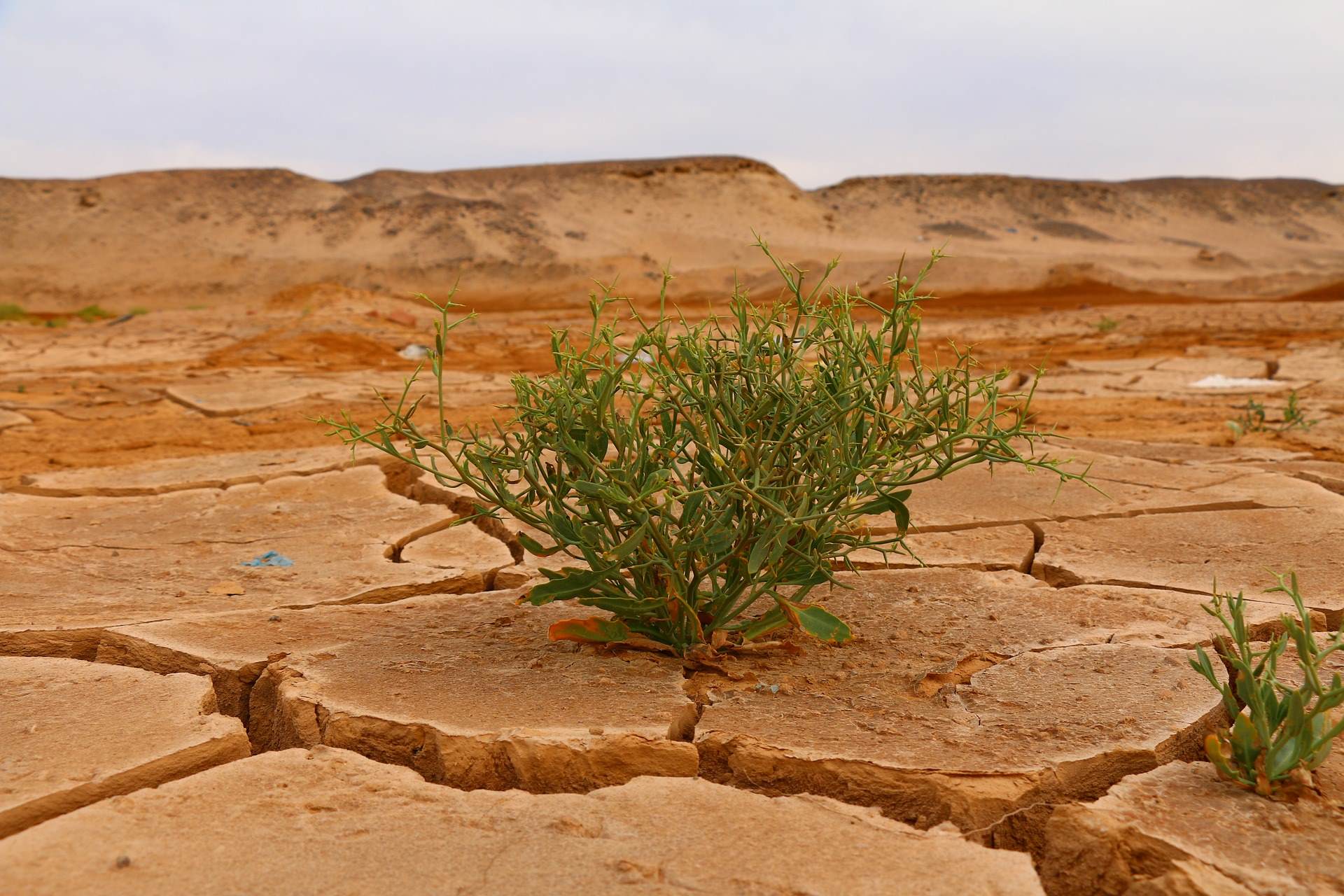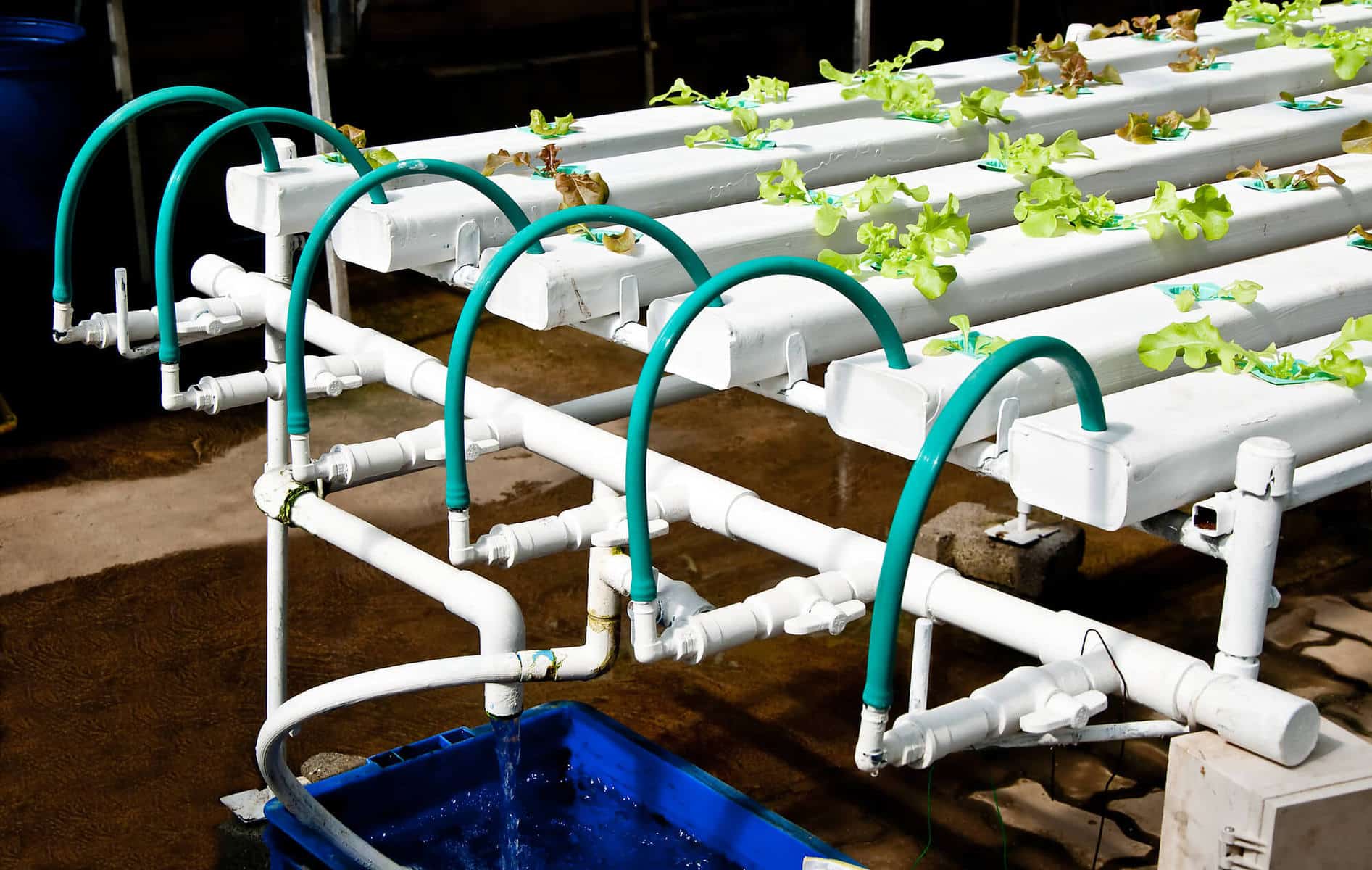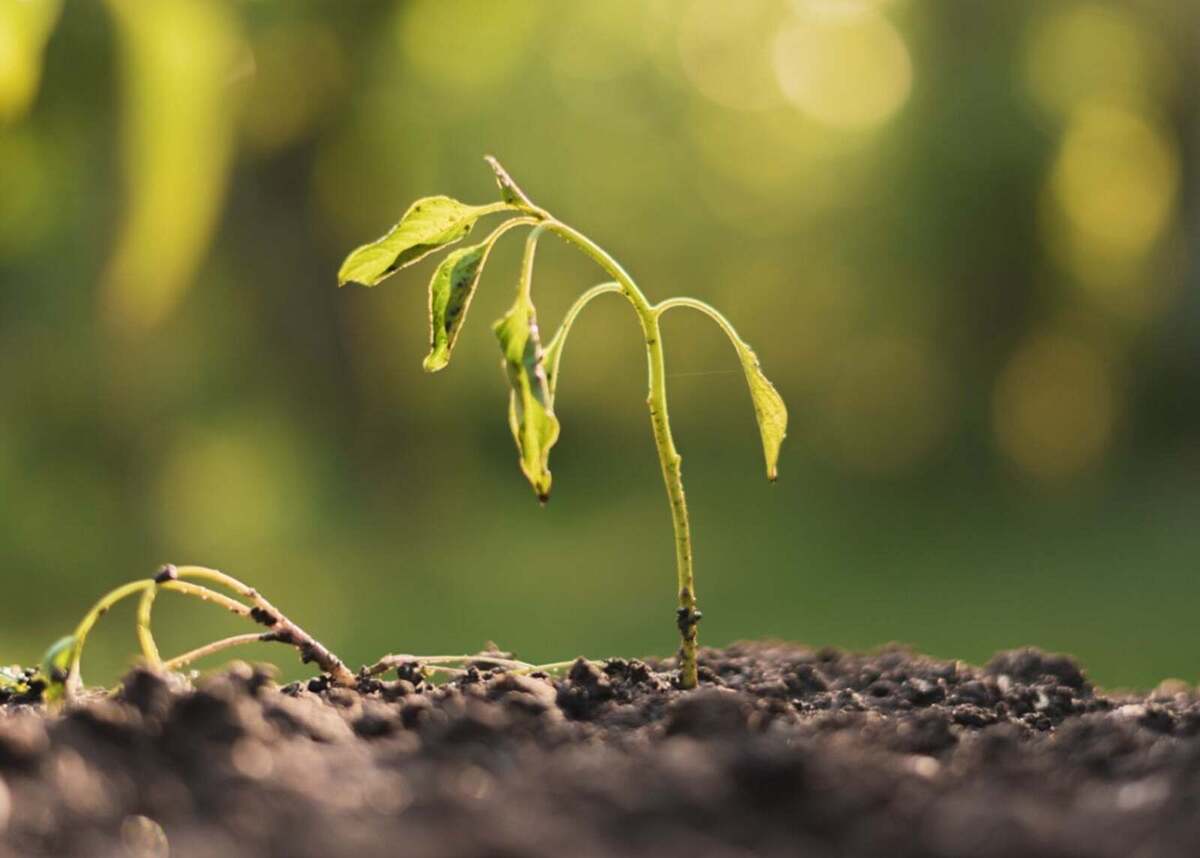Home>Gardening News and Trends>Latest News>How Does Planting Trees Prevent Soil Erosion


Latest News
How Does Planting Trees Prevent Soil Erosion
Modified: February 9, 2024
Discover the latest news on how planting trees helps prevent soil erosion. Learn about the effective strategies and benefits of tree plantation in soil conservation.
(Many of the links in this article redirect to a specific reviewed product. Your purchase of these products through affiliate links helps to generate commission for Chicagolandgardening.com, at no extra cost. Learn more)
Table of Contents
- Introduction
- What is soil erosion?
- Causes of soil erosion
- Effects of soil erosion
- The Role of Trees in Preventing Soil Erosion
- How do trees help prevent soil erosion?
- Types of trees suitable for preventing soil erosion
- Planting and caring for trees for erosion control
- Examples and case studies of successful tree planting projects
- Conclusion
Introduction
Soil erosion is a widespread environmental issue that affects the health of our ecosystems and poses a threat to agricultural productivity. It occurs when the top layer of soil is displaced or washed away by natural elements such as wind, water, or ice. The consequences of soil erosion can be devastating, leading to reduced fertility, loss of biodiversity, and increased sedimentation in bodies of water.
Fortunately, there are effective methods for mitigating soil erosion, and one of the most natural and sustainable solutions is the planting of trees. Trees not only add beauty to our landscapes, but they also play a crucial role in preventing soil erosion and preserving the health of our soil.
This article will explore the causes and effects of soil erosion, and delve into the various ways in which trees contribute to preventing this issue. We will discuss the types of trees that are particularly well-suited for erosion control, as well as the steps involved in planting and caring for these trees. Additionally, we will examine real-life examples and case studies of successful tree planting projects that have effectively combated soil erosion.
By the end of this article, you will have a profound understanding of the significance of trees in preventing soil erosion, and be equipped with the knowledge needed to participate in erosion control efforts in your own community.
What is soil erosion?
Soil erosion is a natural process that occurs when the top layer of soil, known as topsoil, is displaced or removed. It is primarily caused by the forces of wind, water, ice, or human activities. While soil erosion is a natural phenomenon, human activities have accelerated the process, causing severe environmental damage.
Soil erosion is often referred to as the “silent thief” because it goes unnoticed until its effects become evident. The topsoil, which is rich in essential nutrients and organic matter, is crucial for plant growth and food production. When topsoil erodes, it not only diminishes the fertility of the land but also leads to a decline in agricultural productivity.
There are different types of soil erosion, including:
- Sheet Erosion: This occurs when a thin layer of topsoil is gradually stripped away by water flowing over the surface of the land. It can result in the loss of large amounts of soil.
- Rill Erosion: Rill erosion is characterized by the formation of small channels or rivulets on the surface of the soil. These channels deepen over time, carrying away soil particles.
- Gully Erosion: Gully erosion is more severe than rill erosion and is marked by the formation of deep channels or gullies in the land. Gully erosion can lead to the complete loss of topsoil and the alteration of landscapes.
- Bank Erosion: Bank erosion occurs along water bodies, such as rivers and streams. It happens when the natural flow of water erodes the soil banks, leading to their collapse.
- Wind Erosion: Wind erosion happens in areas with loose, dry, and fine-grained soil. Strong winds can lift and carry away soil particles, causing substantial soil loss.
The severity and extent of soil erosion depend on various factors, including rainfall intensity, slope gradient, soil type, vegetation cover, and human activities. Understanding these factors is crucial for implementing effective soil erosion prevention and control measures.
Causes of soil erosion
Soil erosion can be caused by natural factors as well as human activities. Understanding these causes is essential for developing strategies to prevent and mitigate soil erosion effectively.
1. Water: Water is one of the most significant contributors to soil erosion. Heavy rainfall, especially on bare soil or sloping surfaces, can lead to the detachment and transportation of soil particles. The force of water can create channels and gullies, causing significant soil loss.
2. Wind: Wind erosion occurs in areas with dry, loose soil. Strong winds can lift and carry away fine soil particles, leaving behind coarser particles and reducing soil fertility. Wind erosion is particularly prevalent in arid and semi-arid regions where vegetation cover is sparse.
3. Slope: The gradient or slope of the land plays a crucial role in soil erosion. Steep slopes increase the speed of water runoff, making it more erosive. When water flows downslope, it has a greater force to detach and transport soil particles, leading to more significant erosion.
4. Vegetation Removal: The removal of natural vegetation, such as forests or grasslands, can significantly contribute to soil erosion. Plants and trees act as a natural barrier, preventing soil erosion by absorbing rainfall, reducing water runoff, and anchoring the soil with their roots. Without vegetation, the land becomes more susceptible to erosion.
5. Overgrazing: Overgrazing, particularly by livestock, can strip vegetation cover and expose the soil. When animals graze excessively, they remove the protective layer of vegetation, making the soil more vulnerable to erosion by wind and water.
6. Deforestation: Deforestation, the clearing of forests for agriculture, urbanization, or logging, has a significant impact on soil erosion. Trees play a crucial role in preventing erosion by stabilizing the soil with their roots and intercepting rainfall. When forests are cleared, the soil is left bare, making it more susceptible to erosion.
7. Improper Agricultural Practices: Certain agricultural practices, such as excessive tilling, monocropping, and not using cover crops or contour plowing, can increase the risk of soil erosion. These practices disturb the soil structure, reduce organic matter content, and leave the soil vulnerable to erosion by wind and water.
Addressing these causes of soil erosion requires implementing sustainable land management practices, including erosion control measures and the promotion of conservation agriculture techniques. By understanding the causes and taking appropriate actions, we can effectively minimize soil erosion and preserve the health of our soils for future generations.
Effects of soil erosion
Soil erosion can have wide-ranging and significant effects on both natural ecosystems and human societies. Understanding these effects is crucial for recognizing the importance of addressing and preventing soil erosion effectively.
1. Reduced Soil Fertility: One of the most immediate and visible effects of soil erosion is the loss of topsoil. Topsoil is rich in essential nutrients, organic matter, and microorganisms that support plant growth. When topsoil is eroded, the remaining soil becomes less fertile, leading to decreased agricultural productivity and reduced crop yields.
2. Loss of Biodiversity: Soil erosion can result in the loss of habitat for various plant and animal species. When the top layer of soil is washed away or displaced, it takes away the essential microorganisms, seeds, and roots that support diverse ecosystems. The loss of biodiversity can disrupt the balance of ecosystems, impacting the overall health and resilience of natural environments.
3. Water Pollution: When soil erodes, sediment particles can be carried away by runoff and deposited in nearby bodies of water. This sedimentation can lead to increased turbidity, reduced water quality, and the accumulation of pollutants. Sediment-laden water can harm aquatic plants and animals, disrupt spawning grounds, and clog waterways, affecting the health of ecosystems and the availability of clean water resources.
4. Increased Flood Risk: Soil erosion can contribute to an increased risk of flooding. When soil is compacted and lacks the ability to absorb water, rainfall runoff increases, leading to higher chances of flooding. Excessive runoff can overload streams, rivers, and storm drainage systems, causing devastating floods that result in property damage, loss of life, and displacement of communities.
5. Land Degradation: Soil erosion is a form of land degradation, which refers to the deterioration of land quality and productivity. When soil erodes, it becomes more vulnerable to further degradation, including desertification and the formation of barren, unproductive landscapes. Land degradation can lead to the loss of arable land, reducing food security and exacerbating poverty in affected areas.
6. Climate Change: Soil erosion can contribute to climate change processes. When topsoil is eroded, the stored carbon within it is released into the atmosphere, exacerbating greenhouse gas emissions. Additionally, eroded soil has a lower capacity to store water, leading to reduced water availability for plants and contributing to drought conditions.
Addressing the effects of soil erosion requires implementing strategies and practices that prioritize soil conservation and sustainable land management. By protecting our soils, we can mitigate the negative effects of erosion, maintain ecosystem health, and ensure the long-term sustainability of our natural resources.
The Role of Trees in Preventing Soil Erosion
Trees play a vital role in preventing soil erosion and maintaining the health of our soil. They are nature’s own solution to combating this environmental issue and have been used for centuries as a sustainable way to prevent erosion.
1. Root Systems: One of the main reasons trees are effective in preventing soil erosion is their extensive root systems. Tree roots penetrate deep into the soil, creating a network of anchors that hold the soil in place. These roots help to bind and stabilize the soil, reducing the risk of erosion by water and wind. The larger and more complex the root system, the stronger the hold on the soil, making trees an essential ally in erosion control.
2. Water Absorption: Trees have an incredible ability to absorb and manage water. When it rains, tree roots act like sponges, taking up excess water from the soil. This helps to reduce surface runoff, allowing the water to be slowly released into the ground, preventing erosion caused by heavy rainfall. The root systems also help to channel water deeper into the soil, allowing for better water infiltration and reducing the risk of soil erosion.
3. Wind Breakers: Trees act as natural windbreakers, creating barriers that slow down the speed of strong winds. This helps to reduce wind erosion in areas with loose soil. The presence of trees can disrupt wind patterns, preventing the lifting and carrying away of soil particles. Additionally, the leaves and branches of trees can intercept wind-blown sediment, preventing it from traveling further.
4. Filtering Sediments: Trees can act as natural filters, trapping sediment and preventing it from reaching water bodies. When soil erosion occurs, the sediments can end up in nearby streams, rivers, or lakes, polluting the water and harming aquatic life. The presence of trees along waterways can help to intercept and filter out sediment, protecting water quality and preserving the health of aquatic ecosystems.
5. Microclimate Creation: Trees help create a favorable microclimate in their immediate vicinity. They provide shade, reducing soil moisture evaporation and preventing the soil from drying out. This preservation of moisture contributes to soil stability and reduces the risk of erosion. The microclimate created by trees also fosters the growth of vegetation, promoting a more resilient and protective ground cover against erosion.
The role of trees in preventing soil erosion is undeniable. They offer a natural and sustainable approach to erosion control, providing multiple benefits to the environment and communities. From their extensive root systems to their ability to absorb water, trees are powerful allies in preserving the health of our soil and mitigating the adverse effects of erosion.
How do trees help prevent soil erosion?
Trees play a crucial role in preventing soil erosion by employing various mechanisms that work together to protect the soil and reduce erosion risks. Here are some ways in which trees contribute to erosion control:
1. Root Systems: Trees have extensive root systems that penetrate deep into the soil. These roots bind the soil particles together, creating a stable structure that helps prevent erosion. The roots act as anchors, holding the soil in place and reducing the risk of soil being displaced by water or wind.
2. Water Absorption: Trees absorb and hold water, thereby reducing runoff and effectively managing water flow. The roots of the trees act like sponges, absorbing excess rainwater and preventing it from rapidly flowing over the surface. By slowing down the movement of water, trees allow more time for water to infiltrate into the soil, reducing the chances of erosion by water runoff.
3. Surface Protection: The canopy of trees provides shade and protection to the soil surface. This shield helps to reduce the impact of rainfall on the soil, preventing the dislodging of soil particles. By intercepting raindrops, trees minimize the erosive force of rainfall, mitigating the risk of soil splash and sheet erosion.
4. Windbreaks: Trees act as natural windbreaks, disrupting and reducing the force of strong winds. By creating physical barriers, trees slow down wind speeds and prevent the lifting and blowing away of soil particles. They also provide a sheltered microclimate that promotes better ground cover, allowing for the accumulation of organic matter that helps protect the soil from wind erosion.
5. Organic Matter Accumulation: Trees contribute to the build-up of organic matter in the soil through the deposition of leaves, twigs, and other plant materials. This organic matter enhances soil structure, improves moisture retention, and increases the soil’s ability to withstand erosion. The presence of organic matter also encourages the growth of microorganisms and earthworms, which further contribute to soil health and stability.
6. Reduction of Surface Runoff: Tree roots create channels and pores in the soil, promoting better water infiltration. This helps the soil to absorb and retain water, reducing the volume and speed of surface runoff. By decreasing runoff, trees lessen the erosive power of flowing water and minimize the chances of rill and gully erosion.
7. Filtering Sediments: Trees play a role in filtering sediments and preventing them from reaching nearby water bodies. The roots, leaves, and branches of trees act as barriers, intercepting and trapping sediment before it can enter streams or rivers. By reducing sedimentation, trees help maintain water quality and protect aquatic ecosystems.
The combined efforts of trees in root reinforcement, water absorption, surface protection, wind reduction, and organic matter accumulation make them powerful agents in preventing soil erosion. By incorporating trees into erosion control strategies, we can enhance the resilience and sustainability of our landscapes while safeguarding the health of our soils.
Types of trees suitable for preventing soil erosion
When it comes to preventing soil erosion, not all trees are created equal. Some tree species are better suited for erosion control due to their specific characteristics that enhance their effectiveness in stabilizing slopes, managing water flow, and protecting the soil. Here are several types of trees that are particularly suitable for preventing soil erosion:
1. Willows: Willows are known for their extensive root systems and high water tolerance. They can absorb excess water and bind the soil together, making them effective in preventing erosion along riverbanks and areas prone to flooding.
2. Pine Trees: Pine trees have long, dense root systems that anchor the soil effectively. They are particularly useful in stabilizing sandy and loose soils, making them suitable for coastal areas or dune stabilization projects.
3. Sycamore: Sycamore trees have deep and spreading root systems. They are adaptable to various soil types and are known for their erosion-control properties, especially on steep slopes and riverbanks.
4. Redwoods: Redwoods are renowned for their extensive root structures that help prevent soil erosion. They excel at stabilizing steep slopes and are commonly used in erosion control projects in hilly regions.
5. Dogwood: Dogwood trees have a fibrous root system that helps anchor the soil effectively. They are beneficial in erosion-prone areas, such as streambanks and hillsides.
6. Black Locust: Black locust trees are fast-growing and have strong, deep root systems that make them valuable for erosion control on slopes and disturbed areas. They have the ability to adapt to various soil conditions and provide significant stability.
7. Grasses and Bamboo: While not trees, grasses and bamboo are excellent choices for erosion control. Their extensive root systems help stabilize slopes and prevent soil erosion. Species such as switchgrass, buffalograss, and bamboo are commonly used in erosion-prone areas.
It is important to consider local climate, soil conditions, and site characteristics when selecting suitable tree species for erosion control. Consulting with local arborists, forestry experts, or conservation organizations can provide valuable insights into the most appropriate tree species for your specific area.
By choosing the right trees for erosion control, we can maximize their effectiveness in stabilizing slopes, managing water flow, and preventing soil erosion. These trees not only serve as beautiful additions to our landscapes but also play a vital role in preserving soil health and safeguarding our environment.
Planting and caring for trees for erosion control
Planting trees for erosion control requires careful planning, site preparation, and proper care to ensure their success in stabilizing the soil and preventing erosion. Here are some guidelines for planting and maintaining trees for erosion control:
1. Site Evaluation: Assess the site conditions, including soil type, slope gradient, drainage, and sunlight availability. Choose tree species that are well-suited to the site conditions and erosion control needs. Consider consulting with local experts or arborists for guidance on suitable tree species for your specific location.
2. Proper Planting Techniques: Prepare the site by removing weeds, rocks, and debris. Dig a hole that is wide and deep enough to accommodate the root system of the tree. Gently place the tree in the hole, making sure the root collar is level with or slightly above the soil surface. Backfill the hole with soil, firming it gently around the roots to eliminate air pockets.
3. Mulching: Apply a layer of organic mulch around the base of the tree, leaving a gap around the trunk to prevent moisture buildup and rot. Mulch helps retain soil moisture, suppress weeds, regulate soil temperature, and protect the tree’s roots from extreme temperatures.
4. Watering: Provide regular and deep watering during the establishment period to ensure the tree’s survival and promote deep root growth. Water deeply and infrequently, allowing the soil to dry out slightly before watering again. This encourages the roots to grow deeper, increasing their ability to stabilize the soil.
5. Pruning: Prune the tree as necessary to remove dead or damaged branches and promote a balanced, healthy canopy. Pruning also helps maintain proper airflow, reducing the risk of diseases and improving the overall vigor of the tree.
6. Maintenance: Monitor the tree regularly for signs of stress, pests, or diseases. Provide necessary care, such as fertilization and pest control, to ensure the tree remains healthy and resilient. Regularly inspect the surrounding area for signs of erosion and take appropriate measures to address any issues that arise.
7. Site Stabilization: In addition to planting trees, consider implementing other erosion control measures such as terracing, contouring, or installing erosion control blankets or geotextiles. These measures can work in conjunction with trees to stabilize the soil and minimize erosion risks.
Remember that successful erosion control with trees takes time and patience. It may take several years for the trees to establish their root systems fully. Proper maintenance, including watering, pruning, and monitoring, is essential to their long-term success.
By following these planting and caring guidelines, we can ensure the effectiveness of trees in preventing soil erosion, promoting soil health, and creating more sustainable landscapes.
Examples and case studies of successful tree planting projects
Across the globe, numerous successful tree planting projects have demonstrated the significant impact that trees can have on preventing soil erosion and promoting environmental sustainability. Here are a few noteworthy examples:
1. The Loess Plateau, China: The Loess Plateau in China was once heavily degraded due to erosion caused by unsustainable agricultural practices. In the late 1990s, the Chinese government initiated a large-scale tree-planting project to restore the area’s ecosystem. Over 35 million hectares were planted with trees, including species like willows, poplars, and pines. This initiative led to a significant reduction in soil erosion, an increase in groundwater recharge, and an improvement in local livelihoods.
2. The Great Green Wall, Africa: The Great Green Wall is an ambitious project spanning across several African countries, with the aim of combating desertification, land degradation, and soil erosion in the Sahel region. The project involves planting a strip of trees and vegetation across approximately 8,000 kilometers. By establishing this green barrier, the project aims to restore degraded land, improve soil fertility, and promote sustainable land management practices.
3. The Watershed Protection Program, Costa Rica: In Costa Rica, the Watershed Protection Program has been successful in combating soil erosion and protecting water resources. This program involves planting trees in strategic locations to prevent sediments from entering rivers and lakes. The reforestation efforts have not only reduced erosion but also improved water quality and promoted biodiversity conservation.
4. The Reforestation Efforts in Haiti: After experiencing severe deforestation and soil erosion, Haiti initiated widespread reforestation efforts in partnership with local communities and international organizations. The planting of trees, including indigenous species, has not only contributed to erosion control but also helped to restore damaged ecosystems, enhance soil fertility, and provide economic opportunities for local communities.
5. The Thames Chase Community Forest, United Kingdom: The Thames Chase Community Forest is an example of a successful urban tree-planting initiative. This project aims to create a network of woodlands and green spaces in the southeast of England to improve air and water quality, reduce flood risk, and mitigate soil erosion. By engaging local communities in tree planting and conservation efforts, the project has enhanced ecological connectivity and created recreational opportunities for residents.
These examples highlight the positive outcomes that tree planting projects can achieve in combating soil erosion and promoting sustainable land management. They serve as inspiration for communities and organizations around the world to undertake similar initiatives and recognize the vital role that trees play in preserving our natural resources.
Conclusion
Soil erosion is a significant environmental issue that poses risks to our ecosystems, agriculture, and water resources. However, by harnessing the power of trees, we can effectively combat soil erosion and protect the health of our soil. Trees play a crucial role in preventing erosion by stabilizing slopes, managing water flow, and protecting the soil surface.
Through their extensive root systems, trees anchor the soil and reduce the risk of erosion by water and wind. They absorb excess water, slow down surface runoff, and promote water infiltration, minimizing the erosive power of rainfall. Trees act as windbreakers, shielding the soil from the force of strong winds and preventing wind erosion. They also intercept sediment, filter out pollutants, and contribute to the accumulation of organic matter, enhancing soil fertility and structure.
Whether it is planting willows along riverbanks, establishing pine forests in coastal areas, or reforesting degraded landscapes, successful tree planting projects have demonstrated the positive impact trees can have on preventing soil erosion. They have restored ecosystems, improved water quality, and provided livelihood opportunities for local communities.
Planting and caring for trees for erosion control require thoughtful planning, proper techniques, and ongoing maintenance. By selecting suitable tree species, preparing the site, mulching, watering, and providing regular care, we can ensure the long-term success of tree planting initiatives aimed at erosion control.
The success stories of tree planting projects across the globe, such as the Loess Plateau in China, the Great Green Wall in Africa, and local initiatives in Costa Rica and Haiti, inspire us to take action and engage in similar efforts. By recognizing the integral role of trees in preventing soil erosion, we can actively contribute to preserving soil health, protecting ecosystems, and promoting sustainability.
So let us join hands and plant trees, knowing that they are not merely aesthetic additions to our landscapes, but powerful agents of change in mitigating soil erosion and creating a more resilient and sustainable future.





